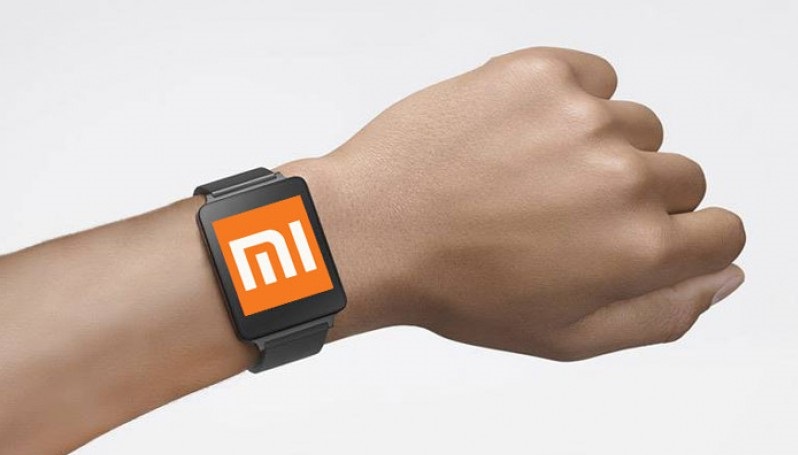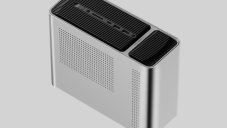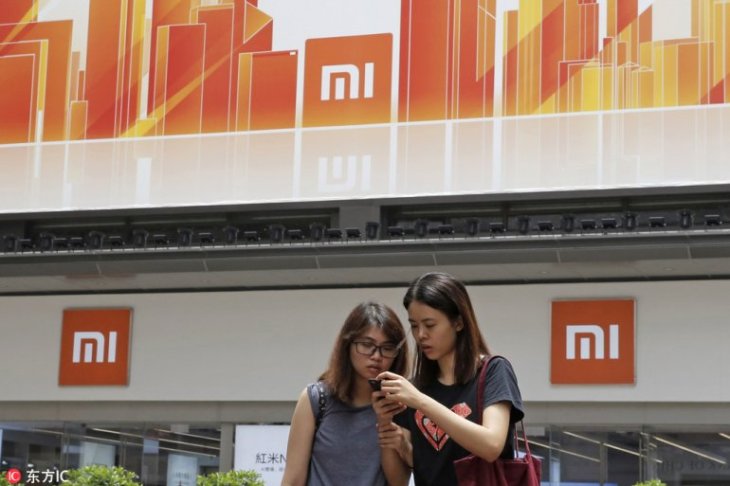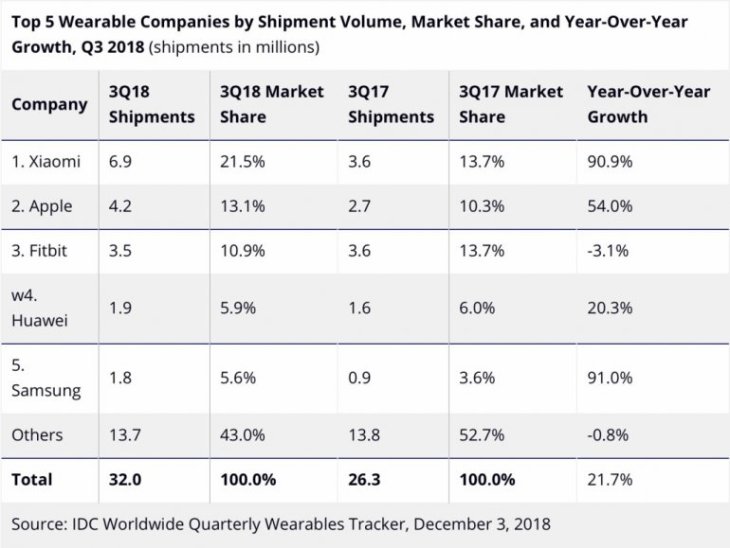Xiaomi Shipped More Wearable Devices Than Apple In Q3 2018: IDC Report
Karamchand Rameshwar - Dec 05, 2018

Xiaomi took the number 1 position in the number of wearable devices shipped in the third quarter of 2018, ahead of Apple and Fitbit.
- Best Gaming Phones 2025: Top Devices for Mobile Gaming
- Best Gaming Smartphones In 2023 Game Enthusiasts Should Know
- Apple Kills Original HomePod, Focusing On HomePod Mini
The Chinese tech company, Xiaomi, just beat the giant Apple to be the largest wearable vendor in Q3 this year. With a massive demand for the Mi Band 3, the Chinese company has shipped more wearable devices than Apple with year-on-year growth of 90.9 percent in shipments.
A report of IDC notes that 6.9 million Mi Bands were shipped by Xiaomi in Q3 which occupied 21.5 percent of market share at the end of Q3 2018. In the same period last year, the number of Mi Bands shipped was only around 3.6 million. Meanwhile, in Q3 this year, Apple shipped about 4.2 million wearable devices, and that is a 54 percent growth over the same period in 2017.
Apple’s current market share in the wearable market is 13.1 percent which is 2.8 percent higher than the figure in Q3 last year. The global figure for wearable device shipment is 32 million which is 21.7 percent higher than last year. Many analysts believe that this increase in shipments was mostly thanks to the new products’ launch from several brands like Huawei, Garmin, and Fitbit.
In Q3, Samsung only managed to ship around 1.8 million wearable devices to capture 5.6 percent of market share which is 91 percent increase in market share over Q3 last year. Meanwhile, Huawei’s shipment figure was slightly better than Samsung, staying at 1.9 million wearables sold to capture 5.9 percent of market share which is 20.3 percent increase over Q3 2017. Fitbit had the highest shipment with 3.5 million wearables in Q3 2018. However, it actually suffered a decline of 3.1 percent in its market share over Q3 last year.
Jitesh Ubrani, IDC senior, analyst suggests that Fitbit’s and Apple’s recent health initiatives, including those requiring regulatory approval, are creating a wall for smartwatch producers that smaller-size vendors of the basic wearable device will struggle to climb. IDC expects that the holiday growth will most likely come from the massive Chinese market, where the basic wearable device demand still continues to grow, while the US market will possibly have a higher demand for more advanced wearables.
Featured Stories

ICT News - Dec 25, 2025
The Visibility Concentration Effect: Why Half the Web Isn’t Qualified Anymore

ICT News - Jul 05, 2025
Windows 11 is Now the Most Popular Desktop OS in the World

ICT News - Jul 02, 2025
All About Florida’s Alligator Alcatraz: A Smart Move for Immigration Control

ICT News - Jun 25, 2025
AI Intimidation Tactics: CEOs Turn Flawed Technology Into Employee Fear Machine

ICT News - Jun 24, 2025
Tesla Robotaxi Finally Hits the Streets: $4.20 Rides That'll Make You Hold Your...

ICT News - Jun 24, 2025
World's First Flying Humanoid Robot Takes Flight

ICT News - Jun 24, 2025
When Closed Source Met Open Source: Bill Gates Finally Meets Linus Torvalds After...

Gadgets - Jun 23, 2025
COLORFUL SMART 900 AI Mini PC: Compact Power for Content Creation

ICT News - Jun 22, 2025
Neuralink Telepathy Chip Enables Quadriplegic Rob Greiner to Control Games with...

ICT News - Jun 20, 2025


Comments
Sort by Newest | Popular